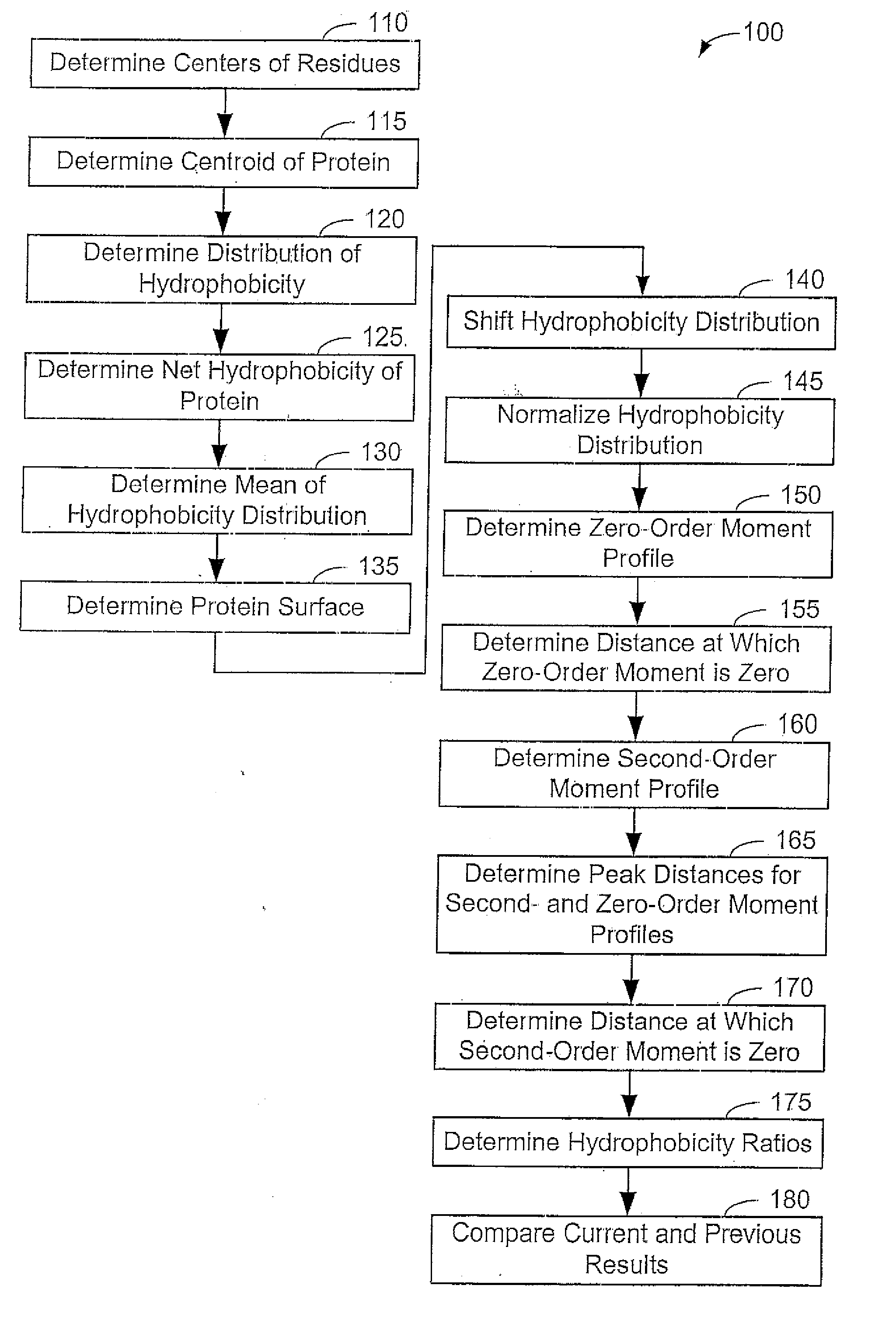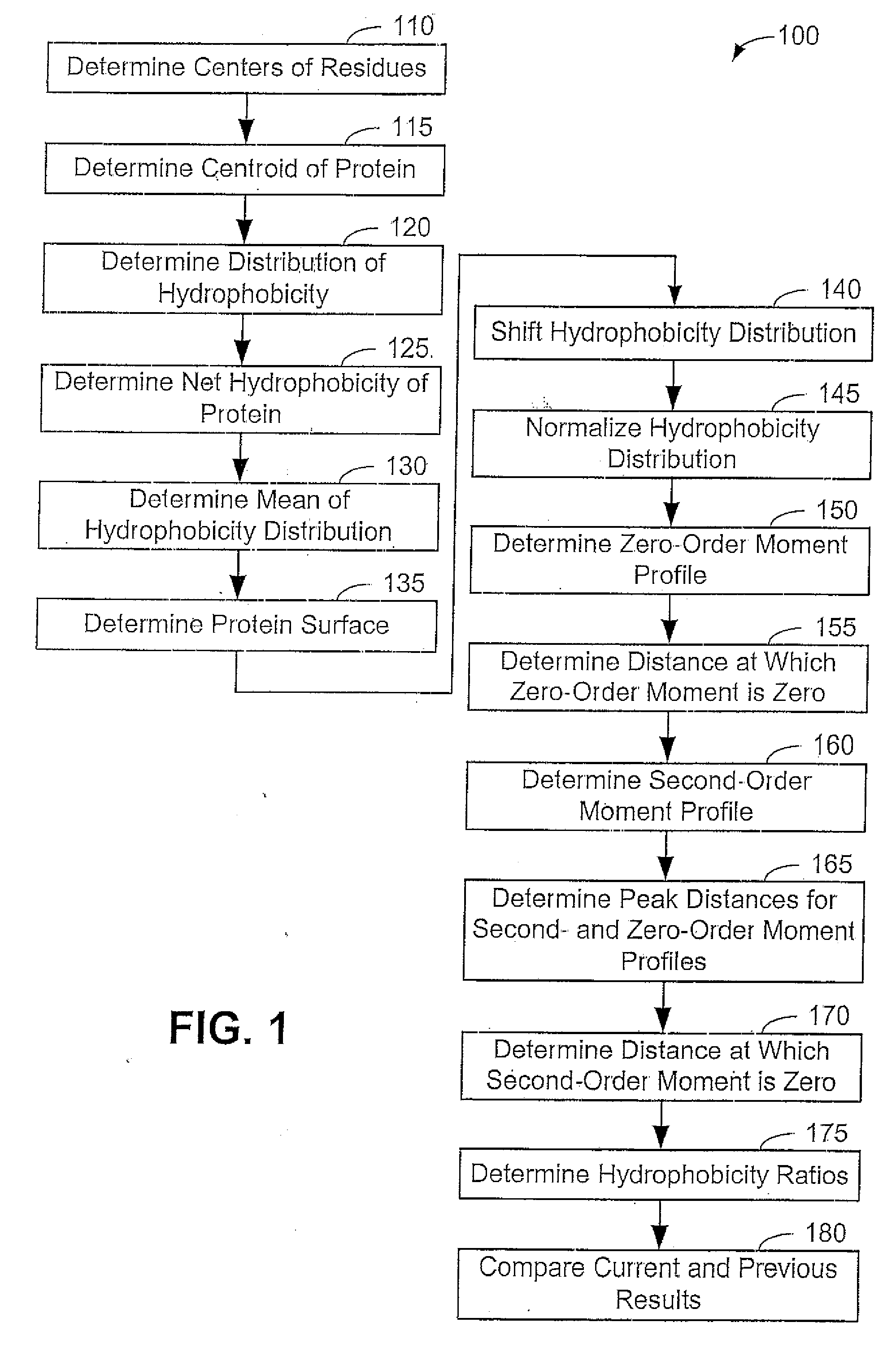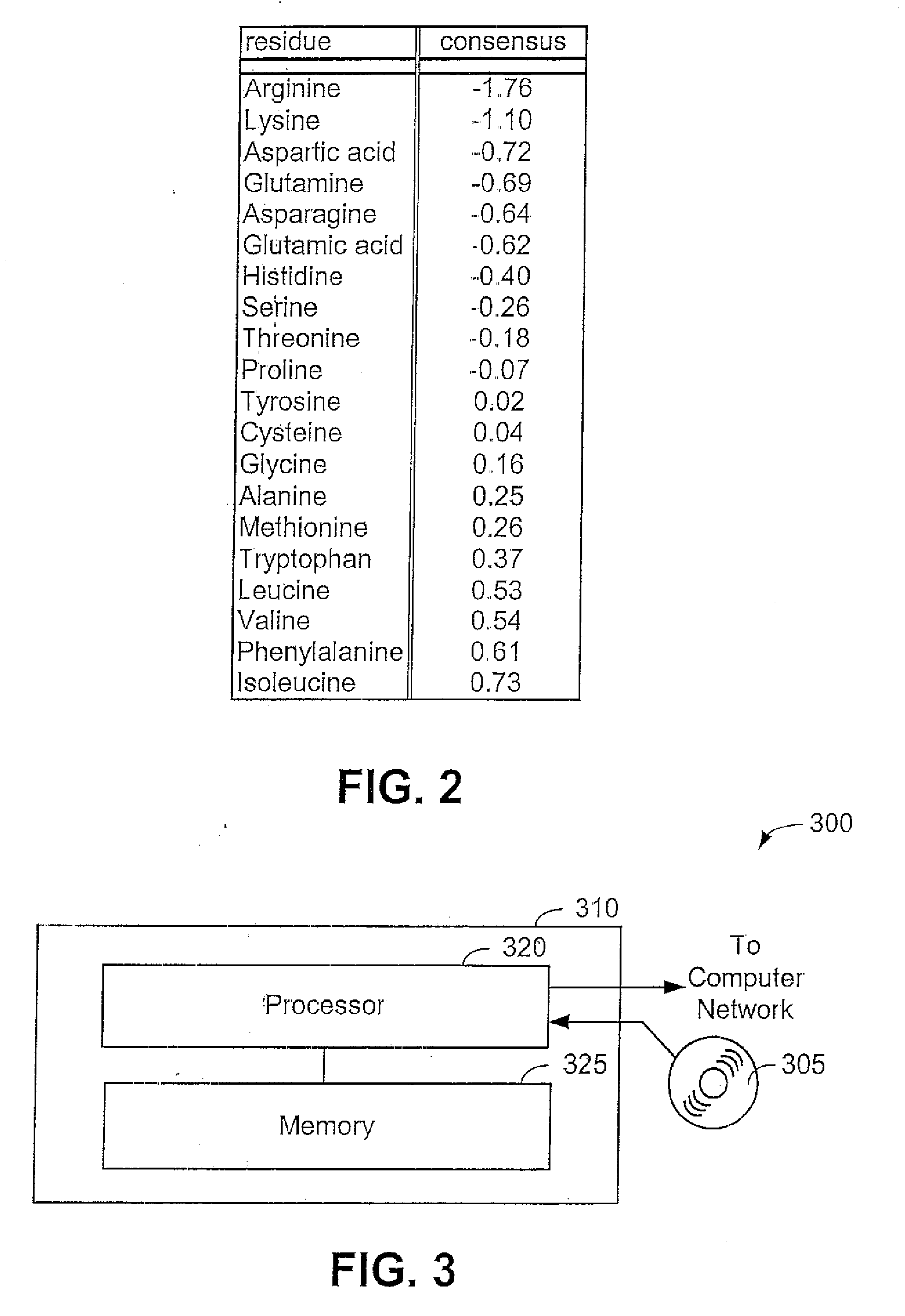Spatial Profiling of Proteins Using Hydrophobic Moments
a technology of hydrophobic moments and protein structure, applied in the field of mathematical analysis of proteins, can solve the problems of fewer than these techniques can accurately determine whether a man-made protein structure is or could be a real protein, and hundreds of thousands of proteins are folded, so as to improve the quantitative comparison of proteins, improve the accuracy of mathematical determination, and improve the effect of quantitative comparison
- Summary
- Abstract
- Description
- Claims
- Application Information
AI Technical Summary
Benefits of technology
Problems solved by technology
Method used
Image
Examples
examples
[0054] Now that the methods of the present invention have been presented, experimental results will be presented. For the experimental results, protein structures were selected by keyword searches of the Protein Data Bank (PDB) and by examination of entries in different SCOP classes. For more discussion on the latter; see Murzin et al., Journal of Molecular Biology 247, 536-540, 1995, the disclosure of which is incorporated herein by reference. The objective was to choose a selection representative of different sizes and different classes. Thirty protein structures were chosen in this manner. For an internal check, two of the proteins chosen included 1CTQ and 121P, the same protein with independently determined structures. Three additional proteins were also chosen from the recently determined structure of the 30S ribosomal subunit. For more information about the structure of the 30S ribosomal subunit, see Wimberly et al., Nature 407, 327-339, 2000, the disclosure of which is incorp...
PUM
| Property | Measurement | Unit |
|---|---|---|
| distance | aaaaa | aaaaa |
| hydrophobicity distribution | aaaaa | aaaaa |
| hydrophobicity | aaaaa | aaaaa |
Abstract
Description
Claims
Application Information
 Login to View More
Login to View More - R&D
- Intellectual Property
- Life Sciences
- Materials
- Tech Scout
- Unparalleled Data Quality
- Higher Quality Content
- 60% Fewer Hallucinations
Browse by: Latest US Patents, China's latest patents, Technical Efficacy Thesaurus, Application Domain, Technology Topic, Popular Technical Reports.
© 2025 PatSnap. All rights reserved.Legal|Privacy policy|Modern Slavery Act Transparency Statement|Sitemap|About US| Contact US: help@patsnap.com



